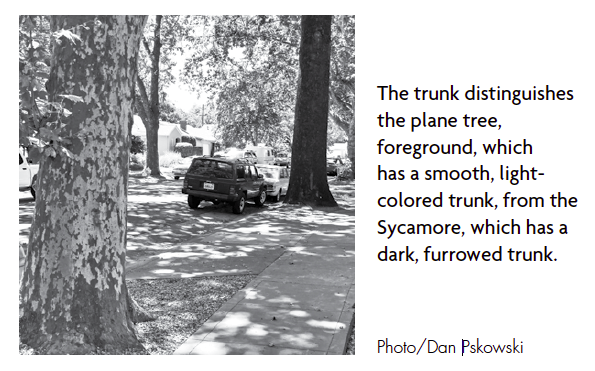Pruning trees is a science and an art. When done properly, pruning is one of the best things an arborist can do for a tree; poor pruning can be one of the worst things.
There are tree-care industry standards that discuss the removal of dead limbs, rubbing/crossing limbs, split limbs, structural pruning and the need to provide adequate clearance over sidewalks, streets, and structures.
Some tree species have unique pruning requirements, and one of those is the plane tree. Commonly called sycamores, plane trees are a dominant species in the Curtis Park neighborhood as well as the No. 1 tree species planted in cities around the world.

Mature plane trees don’t require much pruning other than removal of dead limbs or those that are low over a roof, sidewalk or street. But I see mature plane trees being pruned unnecessarily; healthy limbs are thinned or shortened to reduce the likelihood of failure.
This type of pruning is only required for the true sycamore, which is native to the East Coast. Why? The eastern sycamore has a propensity to shed limbs 4-6 inches in diameter and 15-25 feet long in the summer. Therefore, this particular species needs to have the long, lateral branches thinned and reduced in length to decrease the chance of limb failures.
The eastern sycamore has a few distinguishing characteristics – furrowed bark on the trunk, large leaves, and seed balls that are attached singularly. The true sycamore is also susceptible to sycamore anthracnose. This disease, which causes the leaves to fall off, occurs during the spring and is triggered every time it rains. Residents will call inquiring about why their tree is losing leaves but not those of the tree next door. It’s because the neighbor has a plane tree, which isn’t as susceptible to sycamore anthracnose.
Tree health is the concern when pruning a plane tree as if it were a sycamore. When too much foliage is removed, the tree diverts its energy into the production of more leaves. Epicormic shoots arise from latent buds which sprout readily along the limbs. Dependent upon the mature tree’s reserves, branch dieback may occur.
Doing what’s best for the health of your mature plane tree will ultimately save you money. It’s less costly to remove dead limbs and low branches than to have the entire canopy thinned unnecessarily.
